Final permits aren't yet issued for Lake Superior copper mine. But opponents fear it's all but locked in.
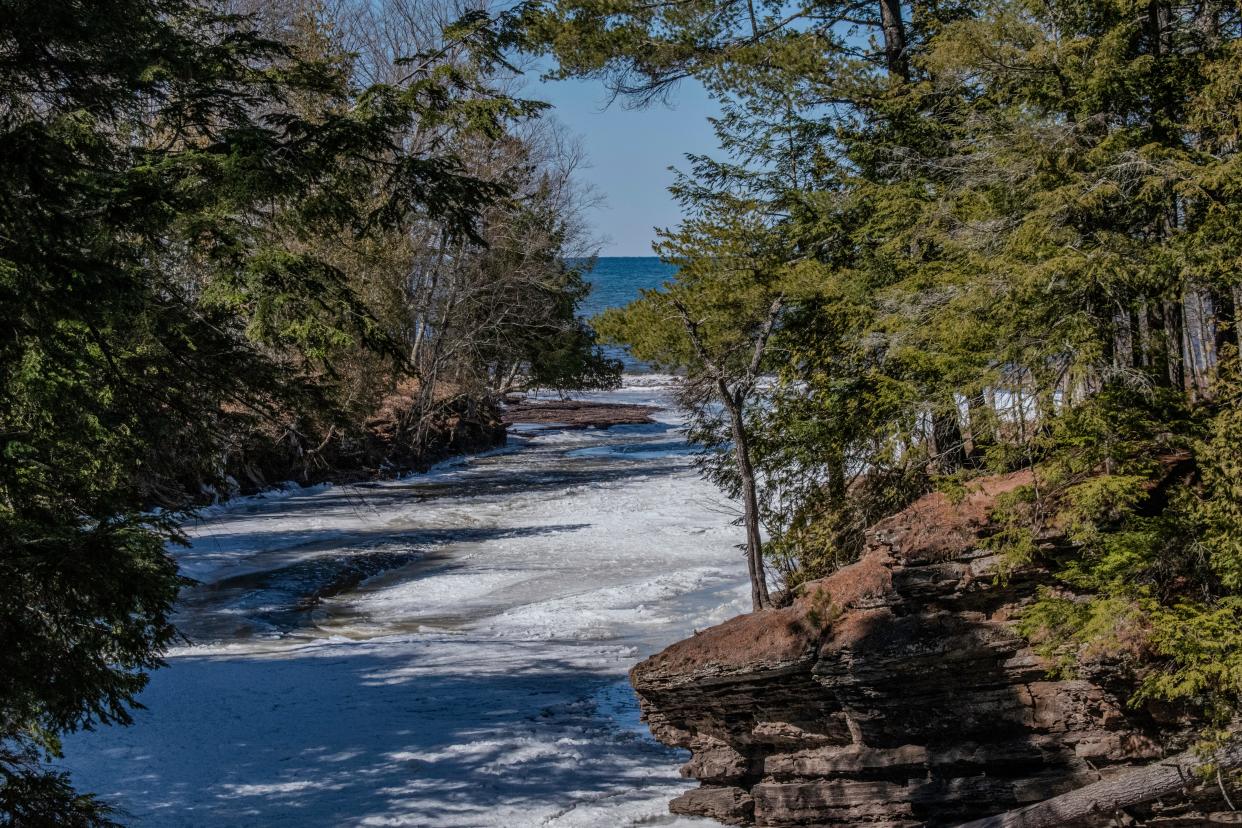
GOGEBIC COUNTY, Mich. – The Presque Isle River carves through the southwest tip of the Porcupine Mountain Wilderness State Park, leaving dozens of waterfalls in its wake before meeting the shore of Lake Superior.
The Midwest's largest tract of old-growth forest, undisturbed for generations, looms on either side of the river's final miles. It’s one of only a few places in the region to escape into the wild.
People from nearby cities, like Milwaukee, Madison, Chicago and the Twin Cities, venture to the rugged area to see the dark night sky, hear the sounds of the forest, and take in the vastness of Lake Superior.
Environmentalists say that a proposed mine – slated to extract copper as close as 100 feet from the lake – is putting all that at risk.
If it goes as planned, the Copperwood Mine will become the closest metallic sulfide mine to Lake Superior to date.
The mine will sit less than 30 miles east of the Wisconsin, Michigan border, and just west of Porcupine Mountain Wilderness State Park, one of the few state parks in the country with wilderness status. The mine will also hug the North Country Trail, which extends roughly 4,800 miles from North Dakota to Vermont.
Highland Copper, the Canadian company behind the mine, has leased the mineral rights to a 3.5 square mile area where it estimates it will extract nearly 65 million pounds of copper over the course of 11 to 14 years. According to the latest feasibility study, the start of construction is slated for later this year.
The controversy over the Copperwood Mine ramped up last year as the company began site preparations, clearing a swath of forest, filling wetlands and permanently rerouting streams next to the North Country Trail.
What worries mine opponents is that, while the Quebec-based company is up to date on its permits, it still has hoops to get through in securing final permits before it can begin operation. The company also hasn’t made it clear where it will draw water from to operate the mine, although the Michigan Department of Environment, Great Lakes, and Energy, or EGLE, said the company intends to look at groundwater as an option. According to a 2018 environmental assessment, the mine will need roughly 430,000 gallons of water per day.
“We’re already seeing an applicant trying to essentially assert control over the world we live in,” said Noah Saperstein, environmental justice specialist with the Red Cliff Band of Lake Superior Chippewa’s Treaty Natural Resources Department.
There is also uneasiness as Highland Copper currently has mineral rights underneath parts of the state park, while the state only has the surface rights. The company has a questionable record when it comes to negative impacts to the environment.
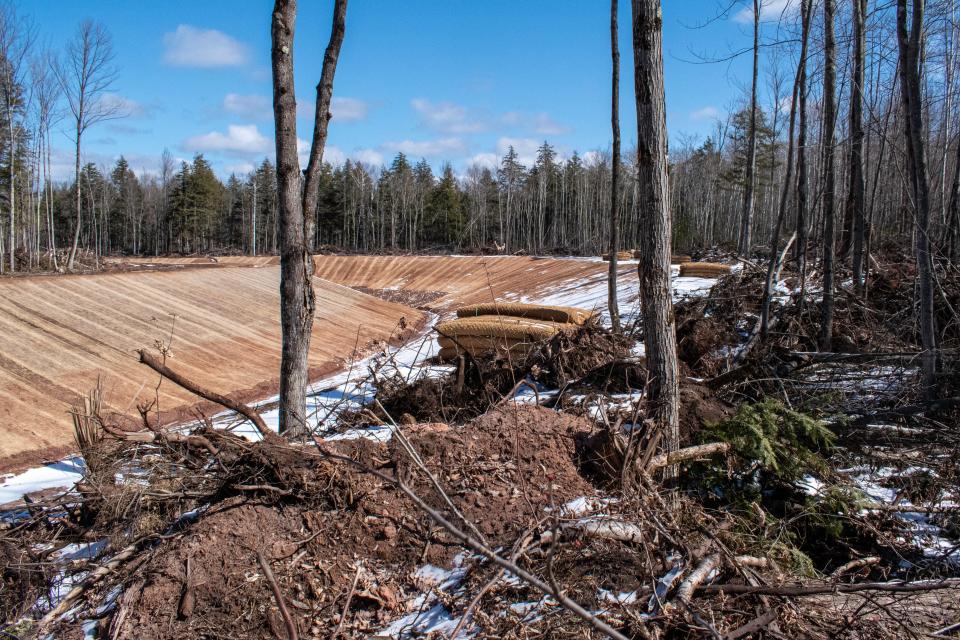
EGLE said via email that while the company has the right to mine, it is not currently permitted to do so and would need to ask for an amendment. EGLE declined the Journal Sentinel’s request for an interview and Highland Copper ignored requests for an interview as well.
The Copperwood Mine will sit upstream and uphill of Lake Superior, the world’s largest freshwater lake by surface area. Superior drains into the other four lakes, which makes any impact to the lake a regional problem.
The Great Lakes region has been working hard to remedy past issues, such as those caused by industrial pollution, and there needs to be an equal focus on preventing future ones, said Johnson Bridgwater, water advocates organizer at River Alliance of Wisconsin who lives in Gogebic County.
“This isn't about a small Michigan town having some financial gain,” Bridgwater said. “This is about Lake Superior.”
There are so many mining opportunities around the lake
A wave of mining proposals have come forth in recent years across Michigan, Wisconsin and Minnesota due to the push to develop domestic sources of critical minerals needed in the clean energy transition. That push is luring many Great Lakes communities back to their mining roots. These roots are apparent as streets, parks and even coffee shops are named after metals, like iron and copper.
There are 14 mines currently in operation around Lake Superior, according to data from the Great Lakes Indian Fish and Wildlife Commission.
Metals, like copper, nickel, lithium and cobalt, among others, are needed to transport and store clean energy needed in the transition. Copper is an efficient conductor of heat and electricity, and is used in renewable energy technologies, like solar and wind power. It’s also a major component of electric vehicles.
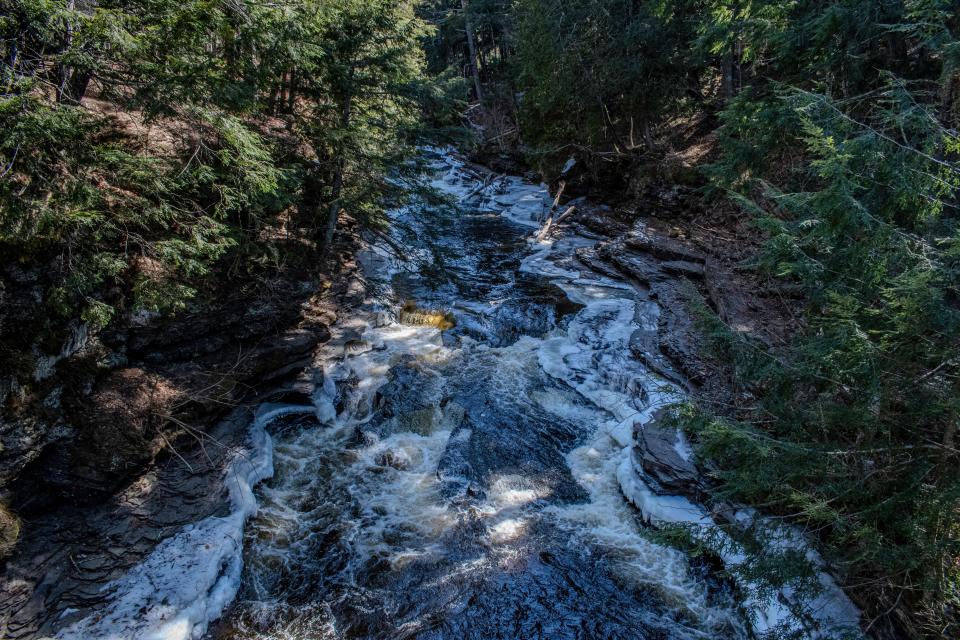
Lake Superior is part of the Midcontinent Rift System, a 1,800 mile scar that formed more than 1 billion years ago where North America started to tear apart. The rift stretches from Kansas up to the lake and down through Michigan’s Lower Peninsula.
The rocks left behind contain significant amounts of copper and nickel that were deposited over time, said Ted Bornhorst, emeritus professor of geological and mining engineering and sciences. And that is why there are so many mining opportunities around the lake, he said.
It’s also why there is spectacular scenery around Lake Superior, like at the Porcupine Mountains as well as Pictured Rocks and Apostle Islands National Lakeshores.
Mining was a major economic driver in the region in the 1800s, Borhnorst said, and the discovery of the Copperwood deposit in the mid-1950s put it back in play.
The White Pine Mine, just east of the state park in Ontonagon County, was the last copper-focused mine in Michigan’s Upper Peninsula. It closed in 1997 and Highland Copper plans to repurpose parts of the White Pine mine for the Copperwood project. Eagle Mine outside of Marquette is largely nickel-focused, but there is a small fraction of copper that’s extracted as well.
Bridgwater worries that Copperwood supporters may be misled into believing that the mine will provide a decent livelihood for the next generation. But he said that most of the profit will go to Canada.
“This is not your grandfather’s mine,” Bridgwater said.
More: Apostle Islands, other Lake Superior national parks aggressively seek net zero carbon emissions
One of the biggest concerns is the tailings basin
According to the U.S. Environmental Protection Agency, metallic mining releases more toxic chemicals than any other industry sector. In 2022, metallic mining released 1.43 billion pounds of toxic chemicals, accounting for 44% of all releases, primarily via on-site waste disposal.
One of the biggest concerns is the tailings basin where the waste is stored after copper is extracted from the ore. At Copperwood, the ore is 1.5% copper, so the remaining percentage is considered waste. Material in the tailings are hazardous, and can leak acids and metals.
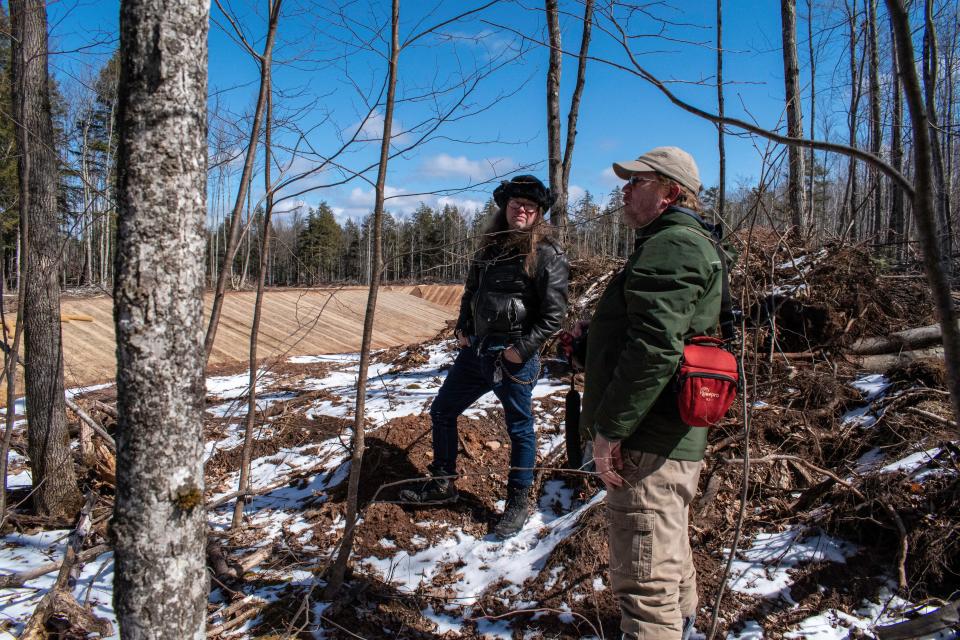
Tailings basins “are notoriously unstable, they fail all over the world,” said Esteban Chiriboga, a mining specialist at the Great Lakes Indian Fish and Wildlife Commission.
The tailings facility at the Copperwood Mine will cover about 350 acres, roughly a mile and a half from Lake Superior just off the North Country Trail, which recently became part of the national park system. Construction of the facility has already begun, including cutting down parts of the forest and rerouting streams.
Mining waste will be stored permanently in the facility after the mine closes, and will require perpetual care, Chiriboga said.
The area near the lake is known for erosion, which is another worry for mine opponents especially as major floods have hit the area in 2016, 2018 and 2023. The frequency and intensity of these major floods are expected to increase with climate change.
“It’s on the shore of Lake Superior, it’s hard to imagine that something bad wouldn’t happen,” Chiriboga said.
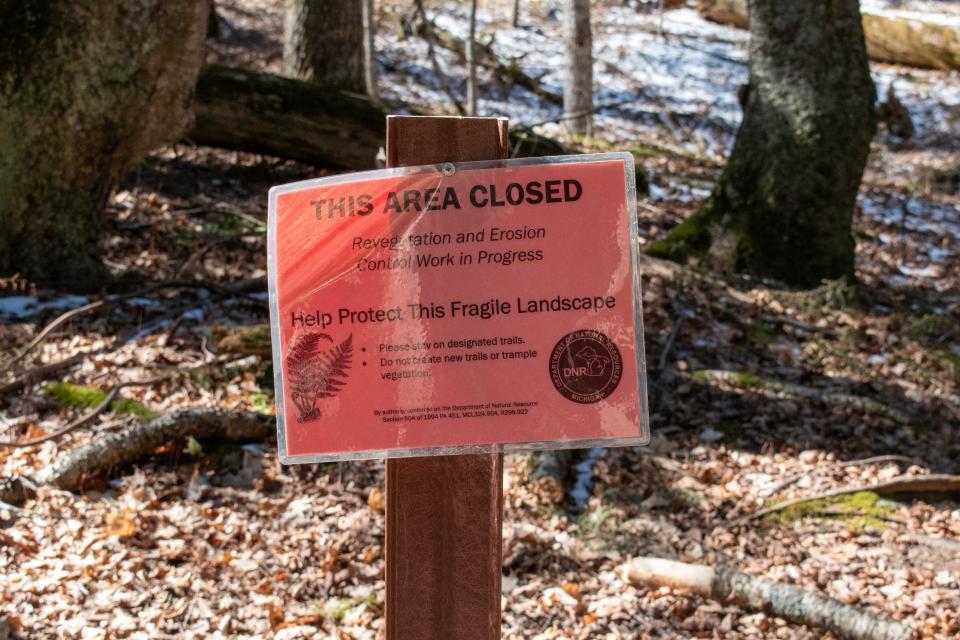
Bornhorst said there is less pollution associated with mines that only extract a single metal like Copperwood will. And because of today’s rules and regulations, he said the environmental impacts can be minimized.
But even if there isn’t a major accident or failure, “we’re still talking about the devastation of the mine footprint,” Saperstein said.
The sounds of Lake Superior’s wilderness may fade
The scenic views, waterfalls and ski slopes make the wilderness state park and the area surrounding it a thriving spot for outdoor recreation.
Marty Erspamer, one of the organizers of Protect the Porkies who lives near the mine site, described the area as “unspoiled.” When Erspamer was a child, the Minnesota native visited the area with his grandparents, and now owns rental properties near the state park.
The wilderness area draws people from all over the world, he said, especially people from nearby cities looking to see the stars.
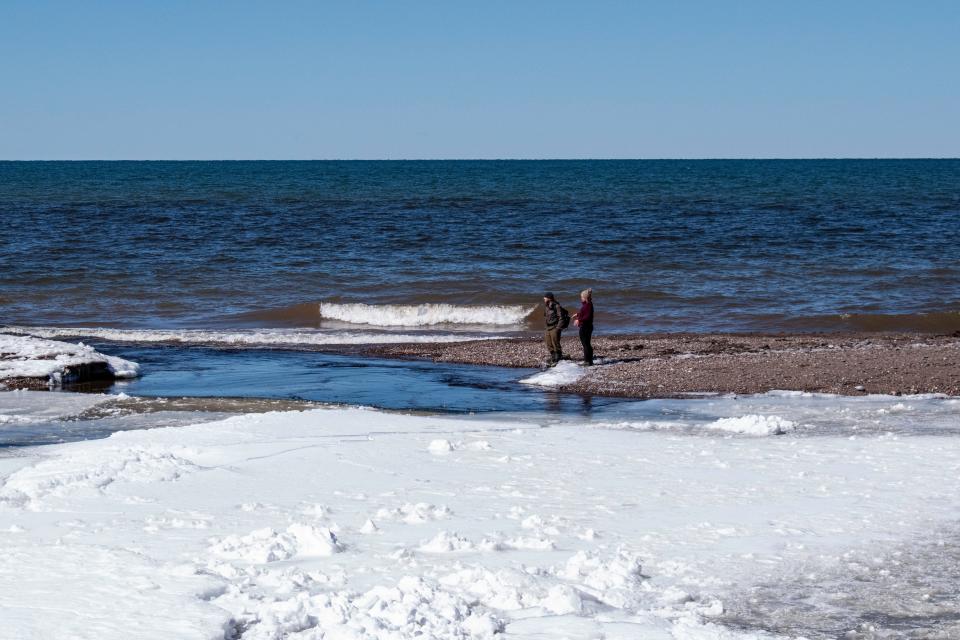
Around 500,000 people visit the state park each year. Ersparmer believes light and noise pollution will take away from the outdoor experience, hurting businesses that rely on tourism.
Mining structures will be visible from the Lake of the Clouds overlook, one of the most popular spots in the park.
Many people seek wilderness areas for the lack of human activity. Even motorized vehicles, motorboats and equipment like chainsaws aren’t allowed in these areas to preserve the quiet. But according to a 2017 study from Science, noise pollution has doubled in more than 10% of wilderness areas around the country.
Ersparmer and Bridgwater believe that if the mine continues to advance, the sounds of the Lake Superior gem will be the next to fade.
More: Water quality issues challenge what it means to 'leave no trace' in beloved Boundary Waters
The mine puts Ojibwe treaty rights at risk
The interconnectedness of water systems in the Lake Superior basin as well as the swings in climate extremes increase the risks associated with metallic mining.
Lake Superior is also a part of the ceded territories where Ojibwe tribes have treaty-guaranteed rights to fish, Chiriboga said. The environmental impacts of mining have already undermined Ojibwe tribes’ abilities to sustain their lifeways.
For instance, the Red Cliff Band of Lake Superior Chippewa has fished on Lake Superior for thousands of years.
Saperstein said the tribe is not inherently opposed to the Copperwood Mine, but there are a lot of unanswered questions.
A big concern is potential water contamination in the lake and the tributaries that feed it, Saperstein said. One such place is Namebinag creek – named after sucker fish in Ojibwe — which is a tributary where the mine will discharge treated wastewater. Ojibwe tribes have a longstanding history with the creek, and it’s also home to an endangered fish, known as the redside dace, he said.
The Red Cliff Band submitted comments stating it was unsure of what the impact will be on the fish.
‘Once you give it up, it’s hard to get back’
With most mining proposals, the federal government has a say in whether a mine can advance as key permits are administered by the EPA and the U.S. Army Corps of Engineers. For instance, the EPA usually administers permits to fill wetlands, which is often needed to construct buildings for mining operations.
But Michigan is one of only three states authorized by the federal government to run its own wetlands program. So in the case of Copperwood, the state pulls all the strings.
At first, Highland Copper proposed taking water directly from Lake Superior, but has since changed course, citing multiple factors like the “challenge and uncertainty of permitting,” according to the latest feasibility study. Pumping water from Lake Superior would require a federal permit from the Army Corps.
Chiriboga and Bridgwater believe the Canadian company changed course because it did not want to undergo the scrutiny that comes with getting a federal permit because of the tribal resources present.
There are fewer opportunities for tribal consultation when the federal government isn’t involved, Chiriboga said. And Saperstein said that conversations have slowed down with the Red Cliff Band since the federal government is no longer involved.
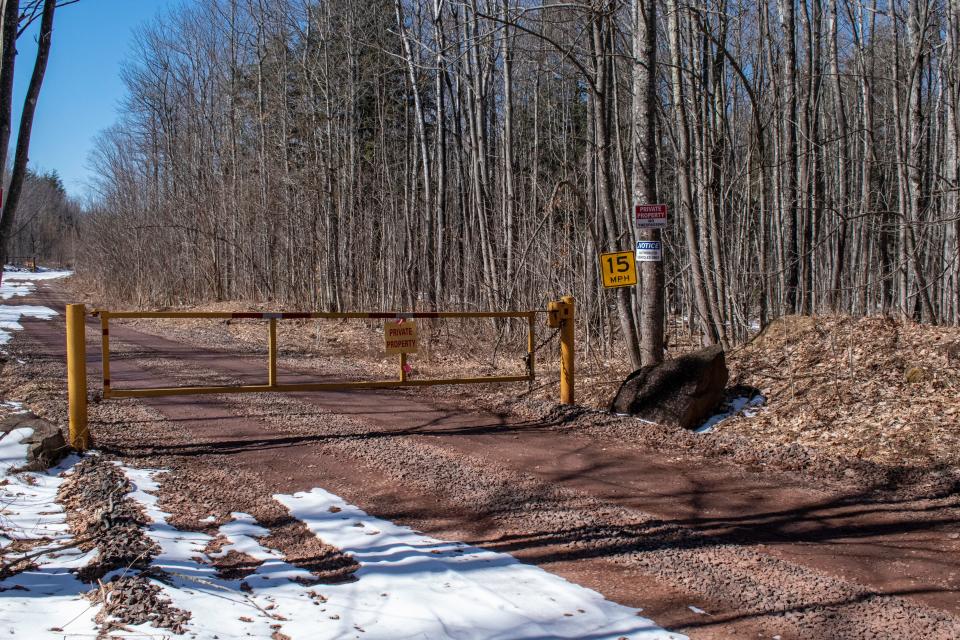
EGLE said via email that the company now intends to look at a groundwater source, but no other details were provided. Regarding tribal engagement, there were a number of consultations from 2011 to 2018, according to a list provided by EGLE. Since then, there have been two meetings, one in 2019 and the other in 2023.
For Copperwood opponents, mining is just too risky in a water-rich place like the Great Lakes. And a petition started by the grassroots Protect the Porkies campaign to stop the mine has already gathered more than 17,000 signatures.
The mine will only be open for a comparatively short time and “it’s not worth giving up what we have,” Erspamer said. “Once you give it up, it’s hard to get back.”
More: Progress seen at Great Lakes' second-largest area of concern, on Minnesota-Wisconsin border
Caitlin Looby is a Report for America corps member who writes about the environment and the Great Lakes. Reach her at [email protected] or follow her on X @caitlooby.
Please consider supporting journalism that informs our democracy with a tax-deductible gift to this reporting effort at jsonline.com/RFA or by check made out to The GroundTruth Project with subject line Report for America Milwaukee Journal Sentinel Campaign. Address: The GroundTruth Project, Lockbox Services, 9450 SW Gemini Dr, PMB 46837, Beaverton, Oregon 97008-7105.
This article originally appeared on Milwaukee Journal Sentinel: A new mine may soon extract copper 100 feet away from Lake Superior
Solve the daily Crossword

